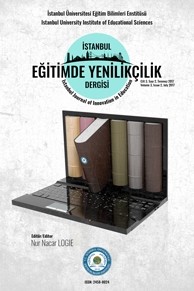Enhanced IMS Metadata for Surgical Education Simulators
Enhanced IMS Metadata for Surgical Education Simulators
Surgical education is an important field in medicine that is directly related with human health. Generally, this education is a time consuming and difficult process. Since surgeons will perform a job that significantly effects human life and quality of living with no room for error, the mentioned education has dramatic impact on patients, on their relatives, and also on society. In the literature, studies show that simulation environments potentially support and enrich this education. However, studies also show that even the several successful simulation tools being developed for the surgical education, still the integration of these technologies into the curriculum of education programs is not successfully established. This study proposes an enhanced IMS Metadata for surgical education simulation content. The proposed model is expected to help the surgical educators to better sequence this content in their curriculum and to better structure their courses. The authors believe that, by supporting these standards the simulation content developed for surgical education could be better defined by technically and pedagogically and in turn the success rate of the integration process of these technologies into current education programs will be improved.
Keywords:
medical education, simulation system, surgical educatio meta-data, extensible markup language,
___
- Andersen, D. K. (2012). How Can Educators Use Simulation Applications to Teach and Assess Surgical Judgment. Academic Medicine, 87(7), 934-941.
- Andersson, P. (2007). The Role of Visual-spatial Ability and Working Memory in Image Guided Simulator Performance (Doctoral dissertation, Umeå University).
- Berkenstadt, H., Ziv, A., Barsuk, D., Levine, I., Cohen, A., & Vardi, A. (2003). The use of advanced simulation in the training of anesthesiologists to treat chemical warfare casualties. Anesthesia & Analgesia, 96(6), 1739-1742.
- Cereci, I., Cagiltay, N.E., Berker, M. (2013). Technology enhanced surgery education environments: requirements and system models, International Workshop on Innovative Simulation for Healthcare, IWISH 2013, 25-27 September, Athens, Greece.
- Chang, W. C., Hsu, H. H., Smith, T. K., & Wang, C. C. (2004). Enhancing SCORM metadata for assessment authoring in e-Learning. Journal of Computer Assisted Learning, 20(4), 305-316.
- Cotin, S., Delingette, H., & Ayache, N. (2000). A hybrid elastic model for real-time cutting, deformations, and force feedback for surgery training and simulation. The Visual Computer, 16(8), 437-452.
- DaRosa, D. A., Skeff, K., Friedland, J. A., Coburn, M., Cox, S., Pollart, S., ... & Smith, S. (2011). Barriers to effective teaching. Academic Medicine, 86(4), 453-459.
- Dietze, S., Sanchez-Alonso, S., Ebner, H., Yu, H. Q., Giordano, D., Marenzi, I., & Nunes,
- B. P. (2013). Interlinking educational resources and the web of data: A survey of challenges and approaches. Program: electronic library and information systems, 47(1), 60-91.
- Gordon, J. A., Wilkerson, W. M., Shaffer, D. W., & Armstrong, E. G. (2001). “ Practicing” medicine without risk: students’ and educators’ responses to high-fidelity patient simulation. Academic Medicine, 76(5), 469-472.
- Grober, E. D., Hamstra, S. J., Wanzel, K. R., Reznick, R. K., Matsumoto, E. D., Sidhu,
- R. S., & Jarvi, K. A. (2004). The educational impact of bench model fidelity on the acquisition of technical skill: the use of clinically relevant outcome measures. Annals of surgery, 240(2), 374.
- Huang, W., Webster, D., Wood, D., & Ishaya, T. (2006). An intelligent semantic e-learning framework using context-aware Semantic Web technologies. British Journal of Educational Technology, 37(3), 351-373.
- Karaliotas, C. (2011). When simulation in surgical training meets virtual reality.Hellenic Journal of Surgery, 83(6), 303-316.
- Mason, R. T., & Ellis, T. J. (2009). Extending SCORM LOM. Issues in Informing Science and Information Technology, 6, 864-875.
- McGaghie, W. C., Issenberg, S. B., Cohen, M. E. R., Barsuk, J. H., & Wayne, D. B. (2011). Does simulation-based medical education with deliberate practice yield better results than traditional clinical education? A meta-analytic comparative review of the evidence. Academic medicine: journal of the Association of American Medical Colleges, 86(6), 706.
- Mustaro, P. N., & Silveira, I. F. (2007). Learning Object Educational Narrative Approach (LOENA): Using Narratives for Dynamic Sequencing of Learning Objects. Issues in Informing Science and Information Technology, 4, 561-571.
- Robb RA, Aharon, S., & Cameron, B. M. (1997). Patient-specific anatomic models from three dimensional medical image data for clinical applications in surgery and endoscopy. Journal of Digital Imaging, 10(1), 31-35.
- Rudman, D. T., Stredney, D., Sessanna, D., Yagel, R., Crawfis, R., Heskamp, D, ... & Wiet, G. J. (1998). Functional endoscopic sinus surgery training simulator. The Laryngoscope, 108(11), 1643-1647.
- Santry, H. P., & James, T. (2006). New trends in general surgery training: creating new training environments to maximize the resident experience.Bulletin of the American College of Surgeons, 91(7), 19-23.
- Schreuder, H. W., Oei, S. G., Maas, M., Borleffs, J. C., & Schijven, M. P. (2011). Implementation of simulation for training minimally invasive surgery*.Tijdschrift voor Medisch Onderwijs, 30(5), 206-220.
- Silvennoinen, M., Mecklin, J. P., Saariluoma, P., & Antikainen, T. (2009). Expertise and skill in minimally invasive surgery, Scandinavian Journal of Surgery 98: 209–213.Acknowledgement
- This study is conducted for improving the scenario designs of the educational materials which are developed for neurosurgery education project (ECE: Tubitak 1001, Project No: 112K287) purposes. The authors would like to thank the support of TÜBİTAK 1001 program for realizing the ECE project.
- ISSN: 2458-8024
- Başlangıç: 2015
- Yayıncı: İstanbul Üniversitesi
Sayıdaki Diğer Makaleler
ISO 9126 Değerlendirme Modeli’nin Adapt Framework’e Uygulanması
Alaskar ÖZPERÇİN, Nazlı CİHAN, Nur NACAR-LOGİE, Vakur ÇİFTÇİLİ
Parental conflict and its association with sibling relationships
Esra İşmen GAZİOĞLU, Ayşegül Kılıçaslan ÇELİKKOL
Zeliha Özsoy GÜNEŞ, Fatma Gülay KIRBAŞLAR
Eğitsel Devinim Araştırmalarında Devinimsel Alan Kavramının Gözden Geçirilmesi
Enhanced IMS Metadata for Surgical Education Simulators
Nergiz Ercil ÇAĞILTAY, İbrahim CERECİ
Akademik Başarı ile Okul İklimi Arasındaki İlişki
Ümit BAHÇETEPE, Filiz MEŞECİ GİORGETTİ
Araştırma ve Öğretimde Paralel Derlem Kullanımı: Uppsala Üniversitesi Örneği
Burak KİRAS, Behiye BEZİR AKÇAY
